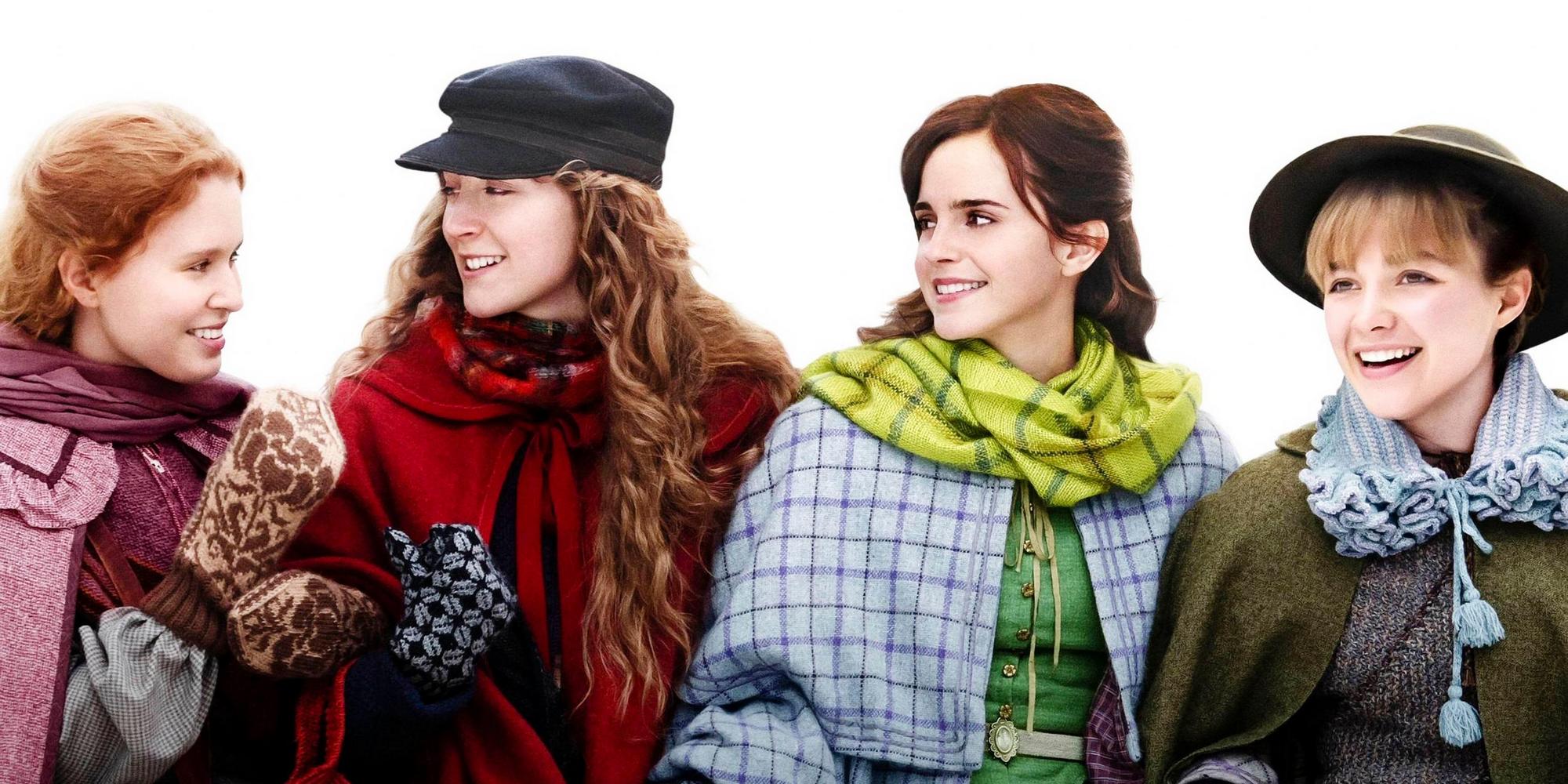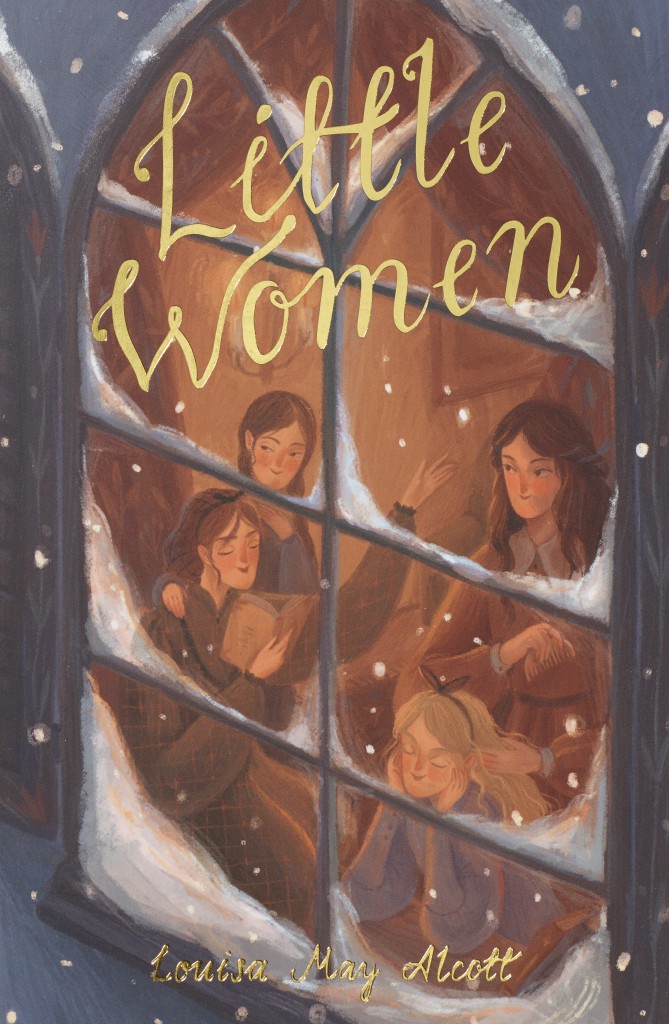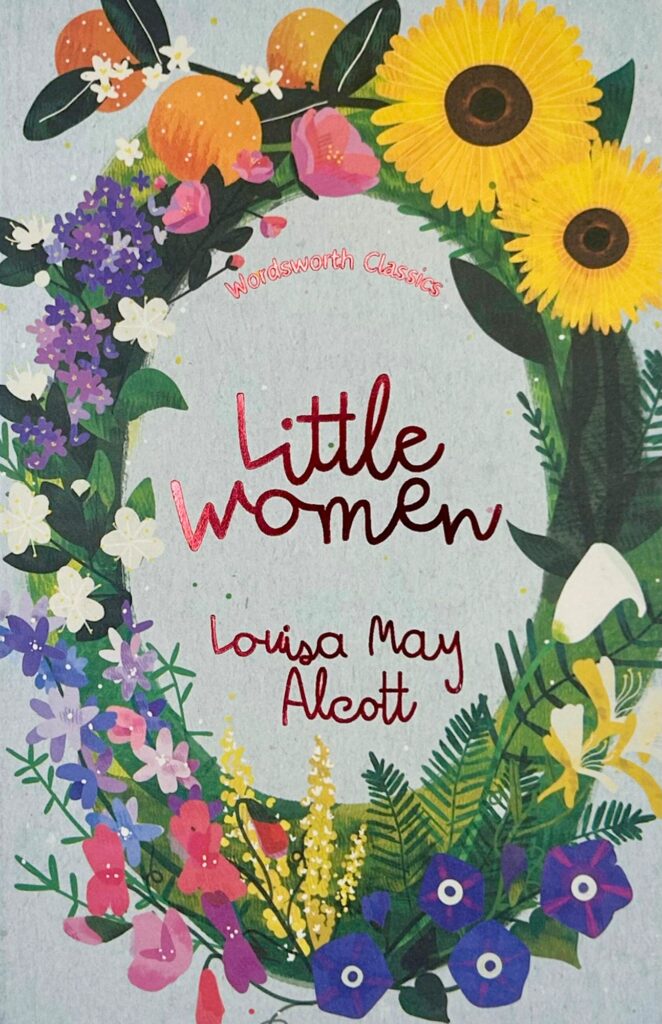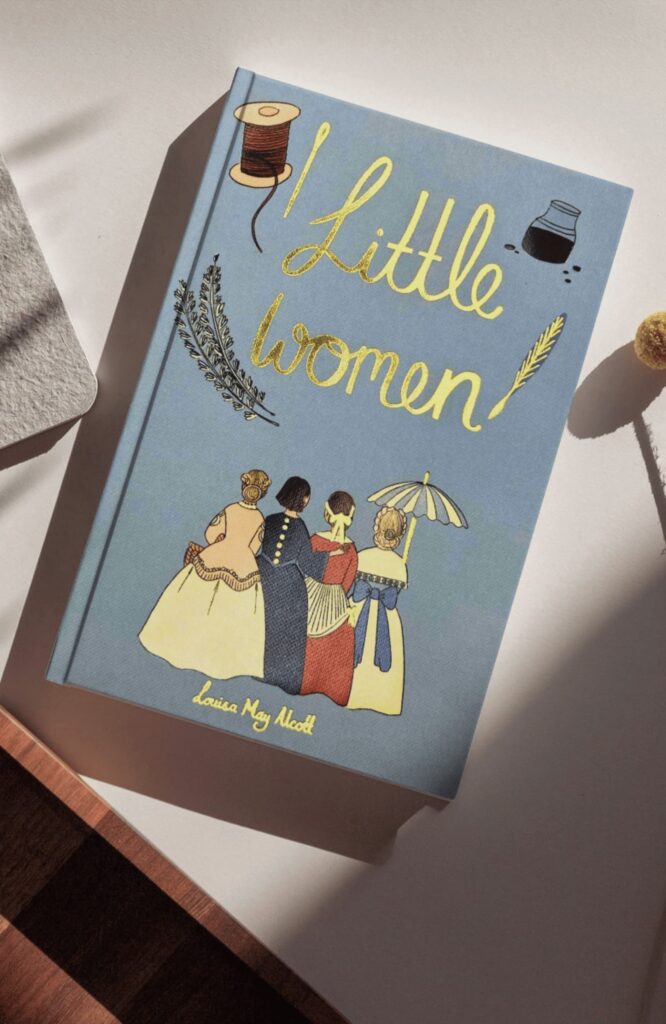
Stefania Ciocia looks at Little Women
Striding with Confidence into the Future: Stefania Ciocia reviews Greta Gerwig’s Little Women
“I’ve decided. I want to own my own book”, says Jo March to her publisher, settling the question of who will hold the copyright to Little Women. With this pronouncement, she draws to a close her bargaining with Mr Dashwood, not only over advances and royalties but over the very soul of her manuscript. Her logic is impeccable (“If I’m going to sell my heroine into marriage for money, I might as well get some of it”) and the mood of the scene is quietly triumphant. The young writer has come a long way from her first visit to the office of the Weekly Volcano, seven years – and two hours’ worth of deeply satisfying film-watching – earlier.
She is also recognizably the same person, ambitious and pragmatic, only more sanguine about compromises and canny about the returns she can expect for getting things right. Back in the opening scene, she had winced through Mr Dashwood’s savage editing of her short story but had accepted both the money and the advice doled out to the ‘writer-friend’ on whose behalf she had claimed to be acting: “Tell her to make it short and spicy. And if the main character’s a girl make sure she’s married by the end. [Pause.] Or dead, either way.”
Mr Dashwood’s glib suggestion that marriage and death are interchangeably suitable destinations in a woman’s life is a pointed departure from the “make it short and spicy, and never mind the moral” in Louisa May Alcott’s original text. Greta Gerwig’s screenplay gets straight to a recurrent concern in her adaptation of Little Women, where the tensions between creative, emotional and financial independence are explored overtly, especially as they unfold in the first-hand experience, and observations, of the female artist and inform, by choice as well as expediency, her professional output.
Alcott shared with Jo a familiarity with the need for ruthless editorial interventions: on 4th February 1864, she had left the manuscript of her first novel, Moods, with her publisher, who had promised: “to have it out by May”. Her journal note continues: “The next day received [sic] a telegram to come down at once & see the printers. Went & was told the story was too long for a single volume & a two-volume novel was bad enough, to begin with.” Alcott refused to shorten the text, feeling that she had made enough cuts to it already. She would revisit her decision, at the request of a different editor, before the year was out.
Tussles over the length of a manuscript are one thing. Feisty discussions – and the tactical capitulation – over marrying off one’s heroines are another. This detail belongs entirely to Alcott’s career, rather than her character’s, though of course, it refers to Jo’s fate and that of her sisters in Part 2 of Little Women.[1] In this case, too, the author complied with what her editor and her readers demanded, but she still managed to make mischief by marrying Jo to the unglamorous Professor Bhaer, and not to his younger, richer, heart-throbbier rival Laurie. It is to Gerwig’s credit that has drawn attention to the marriage question, she proceeds to tackle it and disentangle her narrative from it at the same time, in a way which Alcott would have surely approved of. But more on that later.
The blending of Alcott and Jo as authors of Little Women – a metafictional twist was already seen in Gillian Armstrong’s 1994 adaptation – is reprised when Jo declares to bride-to-be Meg “I’d rather be a free spinster and paddle my own canoe”, words which the cognoscenti recognise from Louisa May’s journals. It’s a brilliant line, and a delicious titbit for Gerwig to throw at fellow Alcottian nerds. But even as I enjoyed every little reference to the connections between the character and her author when it came to the scene where Jo lays out the pages of her manuscript on the floor what leapt out to me was the dramatization not so much of Alcott’s writerly act but of Gerwig’s own creative vortex.
The jumbled-up chronology of her film is the most immediately distinctive element of this version of Little Women, which begins on the eve of the publication of the novel in 1868, backtracks to the Gardiners’ New Year’s party, and to the famous “Christmas won’t be Christmas without any presents”, in 1861 and afterwards interweaves the two unfolding storylines throughout, until they meet and (possibly?) merge at the end. This narrative structure has not found universal approval. Some people have complained that it is confusing and hard to keep track of; instead of adding anything of value, it distracts us from following the development of the characters.
These naysayers are wrong. Not only does the dual timeline keep the story – so well-known even to people who have never read the book – fresh, but it gives it a new pace, great energy and liveliness which the original lacks on those occasions when Alcott succumbs to didacticism or to what I think of as her ‘completist’ instinct.[2] The carefully judged juxtapositions of past and present highlight particular themes or links between various episodes in the lives of the four girls. For example, we see Jo’s nurturing side, and her sense of responsibility, as she moves from fretting by Amy’s bedside after the ice-skating incident to looking after Bethas if she could affect her recovery through sheer strength of will. This feat works once but not twice, for the second panicked rush from Beth’s empty bedroom to the kitchen leads to a heart-stricken Marmee instead of a convalescing patient. It is a coming-of-age moment for Jo who, in a reversal of roles, must console her own mother for Beth’s loss.
The two scenes at the beach also mark significant changes brought on by the passage of time. They encapsulate respectively the golden glow and promise of childhood – the happiness of Amy’s self-assured first encounter with Fred Vaughn when Beth is still rose-cheeked when the rough-and-tumble friendship between Jo and Laurie is emphasised by its contrast with Meg’s budding romance with John Brooke – and Beth’s intimations of mortality. Beth and Jo’s facing up to the reality of their imminent parting feeds into the elder sister’s discovery of her true vocation as a writer of simple, unaffected domestic stories, a role whose political implications will be teased out towards the end of the film by Amy.
Much has been said of how Gerwig’s script, and Florence Pugh’s scintillating interpretation, have finally given Amy her due, rescuing her from Jo’s long shadow and getting us to see her less as a book-burning brat and more as a confident young woman with a clear-eyed sense of self and of her own worth. Amy’s rehabilitation is a triumph, not least for the part it plays in Gerwig’s reframing of the novel’s romantic plots. The film, however, also shines a light on Meg, arguably the most neglected sister in film adaptations where she tends to slip into oblivion more quietly than Beth, whose death marks the climax of solemnity and sentimentality in the story.
Having met Jo as an aspiring writer in bustling New York, and Amy as a lady-in-the-making in Paris, where she divides her time between art classes and social engagements, we encounter Meg perusing luxurious fabrics on a shopping trip with her rich friend Sallie Moffat. Meg gives in to the temptation to buy the silk she cannot afford when Sallie suggests that John won’t mind the extravagant expense for the pleasure of having “the prettiest wife in Concord”. The next scene takes us to Brookes’s modest dovecote, capturing the mixture of bliss and struggle that is Meg’s lot in being a young mother at home alone with two toddlers. I don’t recall the silk-buying episode being featured in previous film adaptations of Little Women, certainly not in the sustained way in which it is used by Gerwig to give the lie to the rose-tinted myth of love-on-a-shoestring.
The whole storyline about Meg explores the gap between her girlish dreams of domestic fulfilment and the reality of married life under the strain of reduced economic circumstances. It offers a convincing portrayal of how hard it is to make relationships work when the first flush of romance has worn off. We return to what happens after the happily ever after when Meg’s heady experience as the belle at the Moffats’ ball concludes with a prophetic plea to Laurie: “Let me have my fun tonight. I’ll be desperately good for the rest of my life”. Cut to the dark kitchen of the dovecote where, in the course of the marital discussion over the cost of the silk, Meg lets slip that she is “tired of being poor”. Meg and John are worn out by hard work and thrift, and equally distraught: the one by the realization of her unwitting cruelty, the other by his failure to provide his wife with the luxuries that people in her circles take for granted.
Gerwig’s account of the Brookes’ courtship and marriage is deliberately muted. Meg doesn’t need Aunt March’s disapprobation in order to make up her mind over John, nor are we regaled with a close look at the drama and excitement of childbirth, as in the 2017 BBC three-part adaptation. The focus moves quickly from fuss and feathers and parties to the sacrifices, and eventually to the rewards, of domestic bonds made all the stronger once the young couple has come through this admittedly minor adversity together. It’s refreshing to see Meg’s resentment for not having an easy life (it’s all relative) out in the open, without the judgment and – dare I say it – without Alcott’s moralising commentary. Meg loves John in spite of his poverty, not because of it, as the novel would have us believe.
This brings me back, in a roundabout way, to my main beef against the 1994 adaptation of Little Women: the fact that it adds to, rather than eschews, the novel’s sentimentality. I have no problem with sentimentality perse, nor with the sentimentality of Alcott’s novel. It’s of its time in a text that is so far ahead of its time in many other ways. What I cannot get over in Armstrong’s self-declared feminist take on Little Women is the sense that when all is said and done – and against Alcott’s protestations – the nub of the story is who the sisters are going to marry. The 1994 film begins as a tale of sisterhood, and of a young writer finding her voice, and ends up as a schmaltzy double rom-com. The kind of rom-com that you do give into, half despising yourself for doing so. (Guilty as charged.)
Not so here. I love the love scenes in this new adaptation. They feel true to the spirit of the text even when Gerwig makes explicit what Alcott leaves unsaid, or perhaps never even dreams of implying. Laurie’s proposal to Jo plays out with a doomed air of inevitability: Timothée Chalamet and Saoirse Ronan look so young, his dishevelled anguish matched by her despair at the impossible conversation he’s dragging them both through, in the full knowledge – for these two know where they stand – that it cannot possibly end well.
Ronan and Chalamet are casting gold. They convey the camaraderie between Jo and Laurie in the ease of their interactions, and by bringing to life the nuances in their fundamental similarity. In fact, at the moment when Jo reveals her cropped hair, it’s hard not to see her as Laurie’s twin. If Ronan’s vulnerability has a streak of steeliness about it, while Chalamet’s is more languid, they share the coltish nature that Alcott ascribes to her characters on the page. Their playfulness has a conspiratorial quality about it, as in the scene when they dance on the Moffats’ porch, alternating mock seriousness and gleeful abandon in perfect synchrony. Even the Pickwick Club, with these two at the helm, looks like proper fun.
Rescued from his loneliness by a whirlwind of March girlhood – see the invasion of the Laurence mansion in the aftermath of Amy’s caning – of course, the dear boy mistakes affection for romantic love for the sister who has facilitated his inclusion in the family. As for the future Mrs Laurence, the first time I saw the film I was taken aback by her declaration that she had loved Laurie all along and that she would not be his consolation prize in the marital stakes. On second viewing, Amy’s outburst no longer struck me as unnecessarily didascalic, but as the sign that she has now surpassed him – and Jo – in maturity, self-awareness and emotional bravery.[3]
Amy’s expression of her feelings about Laurie – along with a few harsh facts about their respective artistic aspirations – shows that she is no longer the baby in the family, the little girl seeking comfort after Mr Davis’s reprimand, the wicked incendiary fairy meting out petty punishments when she doesn’t get her own way. It falls to her, the most worldly of the March sisters, to articulate the difficult truth that the narrative wrestles with: marriage is the most promising career for a certain class of woman.[4]Jo will echo this sentiment in her final discussion with Mr Dashwood, conceding to his key editorial request with the remark that “marriage has always been a financial proposition. Even in fiction”.
And so to the matter of Jo’s own marriage. Louis Garrell’s Professor Bhaer is too handsome, too young, and unencumbered by children, compared to Alcott’s creation. He and Jo are ‘into’ one another from the moment they meet on Mrs Kirche’s doorstep and cross paths living the bohemian life. Beyond that, he is soon relegated to being a footnote in her story, not before having got her inordinately angry. Voicing the defensiveness of the fledgling artist who is giving all of herself to her writing, a bruised Jo takes her to leave of the Professor for the best part of the film in very belligerent tones. She will remember the manner of their exchange, not its content, and will come into her own, as a writer, by herself, with the support of her sisters: a nudge from Beth, and a vindication of the import of her call from Amy, who explains to her that representation matters, that the world needs more stories about ordinary women.
How fitting, then, that Jo must be egged on by her sisters when the time comes to go after Professor Bhaer. It’s a small corrective to that most cliched of romantic clichés, the chase against the clock, the crowning glory of any self-respecting rom-com, as heightened by the quick montage of two different shots of – Gerwig’s words – “one of those epic perfect kisses” under the umbrella. Does this dual scene belong to Jo March’s reality, or to her fictional invention? It could belong to either. Or both. (And if the whole thing is fiction, then we may well have Professor Bhaer look like M. Garrell).
The first time I saw it, I really wanted the film to end on this note of oh-so-clever ambiguity. In fact, Gerwig’s conclusion is cleverer than this. To end here would have returned pride of place to the marriage plot. Better to show the first edition of Little Women being put together at the printer’s, with Jo looking on, and then go back to Alcott’s final chapter, at Plumfield, a school for boys and girls, where each of the main characters has a place and an important role to play. After all, the focus of Little Women is on community. It’s also on becoming, as signposted by Jo’s early running along the streets of New York, towards her dreams of authorship and independence, always inflected in the service of her extended matriarchal family. The final scene dwells on the fulfilment of these dreams, as the sisters, arm-in-arm, stride confidently on to celebrate their collective achievements, under the guise of Marmee’s sixtieth birthday party. Capital.
[1] At least Alcott was spared the battle over the copyright to Little Women. The editor who had commissioned her girl’s book– Thomas Niles of Roberts Brothers (theirs, in a lovely cinematic touch, is the name on the Weekly Volcano’s office) – had also recommended that she should not sell it outright for a flat fee. “An honest publisher and a lucky author, for the copyright, made her a fortune, and the ‘dull book’ was the first golden egg of the ugly duckling”, Alcott wrote in her diary in 1885, annotating the entry where in August 1868 she had recorded the sale of her manuscript.
[2] On this score, see, for instance, sections of Chapter 10 where Alcott expatiates on the Pickwick Club and the Post Office: reading a sample of the March sisters’ Pickwick Paper is less fun than being assured, as concisely as possible, that it’s very amusing indeed. Having to plough through it is a bit like being buttonholed about somebody else’s dreams: these accounts are never as interesting to the listener as they are to the teller.
[3] Speaking of departures from the novel, Gerwig’s elaboration on Jo’s change of heart about Laurie is a welcome fleshing out of Jo’s loneliness, accentuated by her grief at Beth’s loss. It’s entirely credible that she should feel disappointment at the discovery that her Teddy has married Amy, the sister who “has always had a talent for getting out of the hard things in life”.
[4] A woman’s need to marry well is Aunt March’s mantra. Gerwig reimagines her as an impenitent spinster, rather than a widow, precisely to underscore this point. When Jo remonstrates that she does not practice what she preaches, Aunt March does not miss a beat: “[I’m not married] Because I was rich and made sure to keep my money”.
Image: BFA / Alamy Stock Photo
Books associated with this article

Little Women & Good Wives (Children’s)
Louisa May Alcott

Little Women & Good Wives
Louisa May Alcott

Little Women (Collector’s Edition)
Louisa May Alcott
